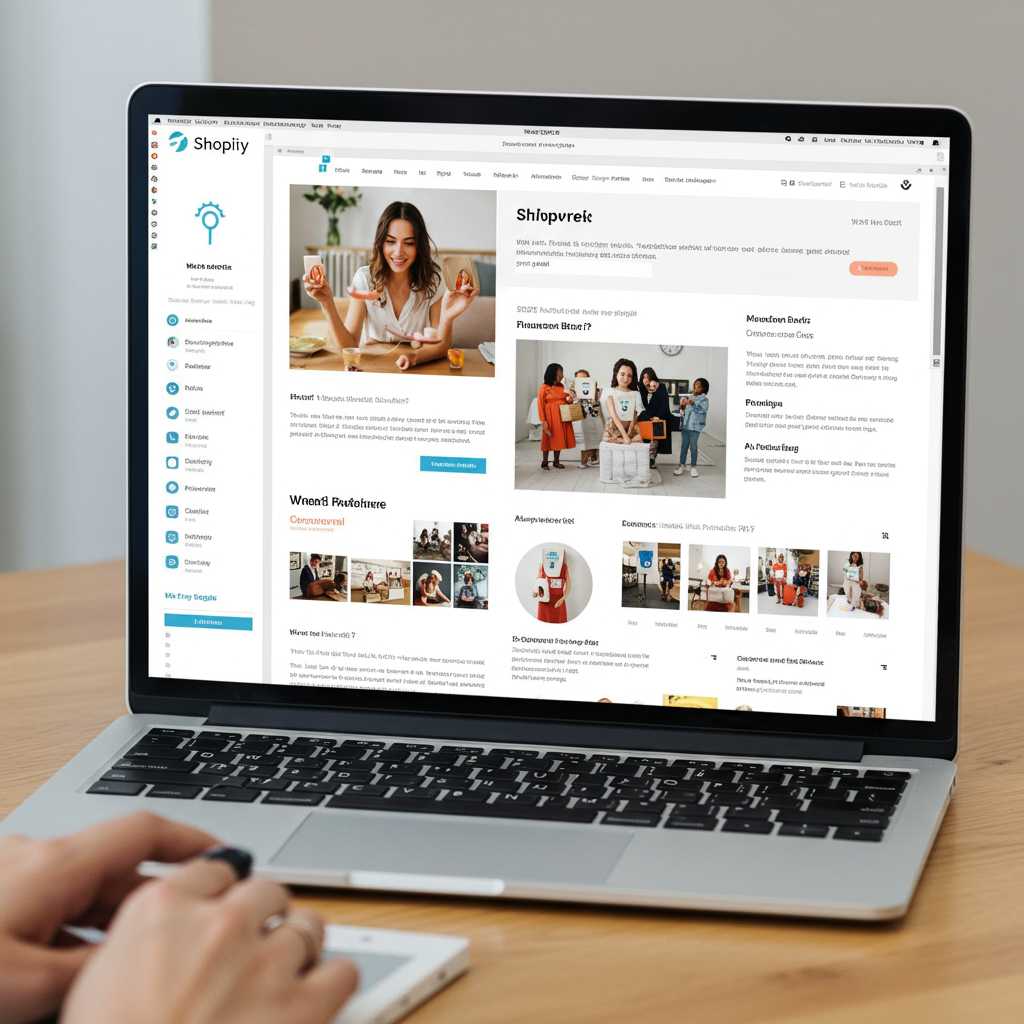I’m here to share my top strategies for designing a high-converting Shopify homepage that resonates with your customers in the coming year.
As a merchant, I know you understand that your Shopify homepage isn’t just a digital storefront; it’s the beating heart of your online business. It’s often the first impression a potential customer has of your brand, and in 2026, that impression needs to be more impactful than ever.
I’ve seen countless businesses thrive or falter based on their homepage’s effectiveness. A well-designed homepage guides visitors, builds trust, and ultimately converts browsers into loyal customers.
So, what does a high-performing Shopify homepage look like in 2026? I believe it’s a blend of cutting-edge technology, deep understanding of user behavior, and timeless design principles.
First and foremost, I cannot stress enough the importance of a truly mobile-first design. By 2026, the vast majority of your traffic will likely originate from mobile devices. Your homepage must look, feel, and function flawlessly on every screen size.
I always prioritize speed. A slow-loading homepage is a conversion killer. In 2026, users expect instant gratification. I recommend optimizing all your images, leveraging lazy loading, and choosing a lightweight Shopify theme.
Let’s dive into the hero section – that crucial ‘above the fold’ area. This is where you grab attention. I advise a compelling headline that clearly states your value proposition, accompanied by a high-quality, relevant image or video.
Your hero section absolutely needs a prominent, clear Call to Action (CTA). I’ve found that specific, action-oriented buttons like ‘Shop New Arrivals’ or ‘Discover Our Collection’ perform far better than generic ‘Learn More’.
I always ensure navigation is intuitive. Your customers should effortlessly find what they’re looking for. Consider mega menus for larger inventories and a highly visible search bar.
I’ve noticed a significant shift towards video content. Incorporating short, engaging videos on your homepage – perhaps showcasing products in action or telling your brand story – can dramatically increase engagement.
In 2026, personalization isn’t a luxury; it’s an expectation. I encourage you to explore Shopify apps that allow you to dynamically display content, product recommendations, or even personalized greetings based on a user’s browsing history or location.
Building on personalization, I foresee AI-driven product recommendations becoming even more sophisticated. Use Shopify’s built-in features or third-party apps to suggest relevant products on your homepage, enhancing the shopping experience.
I always integrate social proof. Displaying customer reviews, testimonials, trust badges (like secure payment icons), and media mentions builds immediate credibility and trust with new visitors.
Strategically highlight your best-selling products and new arrivals. I find that dedicated sections for these categories on your homepage drive curiosity and encourage exploration.
Don’t forget to tell your brand story. I believe customers in 2026 are more conscious about supporting brands that align with their values. A concise ‘About Us’ section or a link to your story can foster a deeper connection.
My overarching principle for homepage design is always user experience. Is it easy to navigate? Is the information clear? Is the path to purchase obvious? I constantly put myself in the customer’s shoes.
I’m a strong advocate for accessibility. Ensuring your homepage is usable by everyone, including those with disabilities, isn’t just good practice; it’s becoming a legal and ethical imperative. Think about alt text for images and proper color contrast.
Maintain consistent branding throughout your homepage. I ensure that colors, fonts, and imagery all align with your brand identity, creating a cohesive and professional look.
Shopify’s theme sections are incredibly powerful. I recommend leveraging them to easily drag and drop content blocks, allowing for flexible and dynamic homepage layouts without needing to touch code.
Never stop testing. I regularly A/B test different headlines, CTAs, image choices, and section layouts on my homepage. Small tweaks can lead to significant improvements in conversion rates.
Use Shopify Analytics and Google Analytics to understand how visitors interact with your homepage. I pay close attention to bounce rates, time on page, and click-through rates to identify areas for improvement.
I always include a prominent, yet non-intrusive, email signup form. Building your email list directly from your homepage is a powerful way to nurture leads and drive repeat business.
Don’t overlook the footer. I ensure it contains essential links like contact information, shipping policies, privacy policy, and social media links. It’s a crucial navigation point for detailed information.
Remember to keep your homepage fresh. I regularly update it for seasonal promotions, new product launches, or special events. A dynamic homepage signals an active and engaged brand.
I’ve shared a lot of my insights here, covering everything from mobile optimization to AI-driven personalization. What are your thoughts on these strategies for your own Shopify store? I’d love to hear your perspective.
Designing a high-converting Shopify homepage for 2026 is an ongoing process, not a one-time task. I encourage you to embrace experimentation, listen to your customers, and continuously refine your digital storefront.
My goal is to empower you to create a homepage that not only looks fantastic but also performs exceptionally well, driving sales and building lasting customer relationships.
So, take these tips, apply them to your Shopify store, and watch your online presence transform. I’m confident that with a strategic approach, your homepage will be a powerful asset for years to come.






